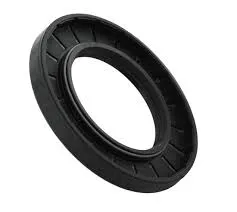10 月 . 21, 2024 23:02 Back to list
Understanding Oil Tank Gaskets and Their Importance for Effective Sealing Solutions
Understanding Oil Tank Gaskets Essential Components for Efficiency and Safety
Oil tanks are critical structures employed in various industries, ranging from fuel storage to petrochemical processing. One of the most vital components of an oil tank system is the gasket. Oil tank gaskets play a crucial role in ensuring the integrity and efficiency of the tank, serving as a barrier that prevents leaks and protects against contaminants. This article will explore the significance, types, materials, maintenance, and best practices associated with oil tank gaskets.
What is an Oil Tank Gasket?
A gasket is a mechanical seal that fills the space between two or more mating surfaces, preventing leakage of fluids or gases. In the context of oil tanks, gaskets are used to seal connections between different parts of the tank system—such as flanges, manholes, and pipe fittings—ensuring that the oil stored within is contained securely. By preventing leakage, gaskets are instrumental in maintaining safety standards and operational efficiency.
Importance of Oil Tank Gaskets
The importance of oil tank gaskets cannot be overstated. They are integral to
1. Leak Prevention Oil leaks pose significant environmental risks and can lead to costly cleanup efforts. A high-quality gasket creates a reliable seal that mitigates the risk of spillage.
2. Safety Compliance Regulatory bodies enforce strict guidelines regarding the storage and handling of oil. Proper gasket installation is essential to comply with these safety standards and to protect workers and the surrounding environment.
3. Operational Efficiency An efficient gasket can help minimize downtime caused by leaks or maintenance issues. This operational reliability is crucial in industries where continuous oil flow is necessary.
4. Longevity of Equipment Quality gaskets, designed to withstand the rigors of oil storage, can extend the life of the equipment by preventing corrosion and damage caused by leaks.
Types of Oil Tank Gaskets
Oil tank gaskets come in various types, each suited for specific applications and conditions. Some of the most common include
1. Flat Gaskets These are the simplest type, typically made from compressed fiber or rubber. They are ideal for low-pressure applications.
2. O-ring Gaskets These round gaskets provide excellent sealing capabilities and are often used in high-pressure situations. They are commonly made from materials like silicone or neoprene.
3. Spiral Wound Gaskets Consisting of a series of metal and filler material layers, these gaskets can withstand extreme temperatures and pressures, making them ideal for heavy-duty applications.
oil tank gasket

4. Custom Gaskets For specialized needs, custom gaskets can be manufactured to meet specific dimensions and material properties.
Materials Used in Oil Tank Gaskets
The choice of material is critical to the performance of gaskets
. Common materials include- Rubber Known for its elasticity and resilience, rubber gaskets are often used for water and fuel applications.
- PTFE (Polytetrafluoroethylene) This non-stick material is resistant to chemical degradation and is used in aggressive chemical environments.
- Metal Metal gaskets, often used in high-pressure applications, provide durability and strength.
- Composite Materials These can offer the best of both worlds in terms of flexibility and strength.
Maintenance and Best Practices
To ensure the longevity and effectiveness of oil tank gaskets, regular maintenance is necessary. Here are some best practices
1. Periodic Inspections Conduct regular inspections to check for signs of wear, tear, or degradation in gaskets.
2. Proper Installation Ensure gaskets are installed correctly to avoid uneven pressure distribution, which can lead to leaks.
3. Use Manufacturer Recommendations Always choose gaskets recommended by the tank or equipment manufacturer to ensure compatibility.
4. Replace Worn Gaskets Promptly If a gasket is showing signs of deterioration, it should be replaced immediately to prevent leaks.
5. Environment Considerations Store oil tanks in environments that protect against extreme temperatures and chemical exposure, which can degrade gasket material.
In conclusion, oil tank gaskets are indispensable to the safe and efficient operation of oil storage systems. Understanding their importance, types, materials, and maintenance practices is essential for anyone involved in oil management. By prioritizing high-quality gaskets and adhering to best practices, industries can safeguard both the environment and their operational integrity.